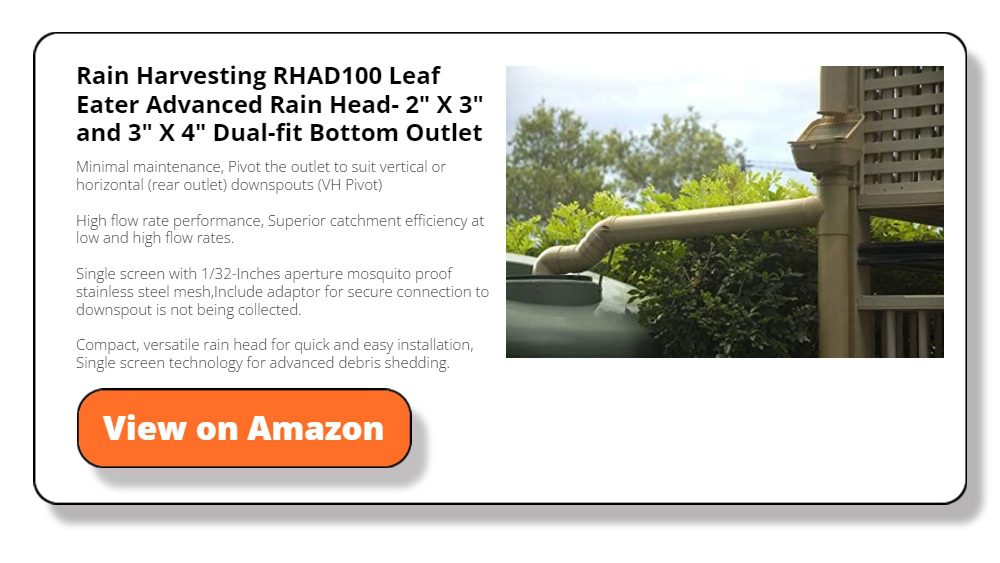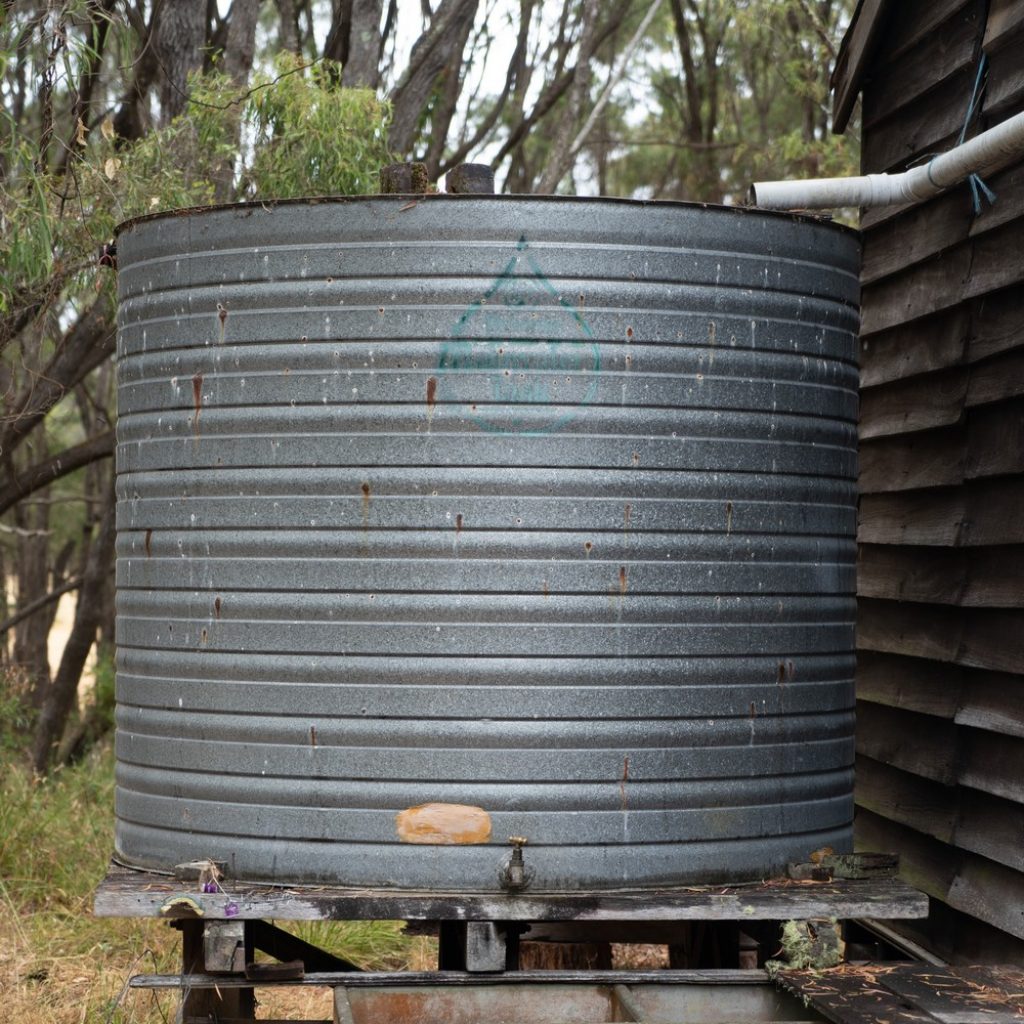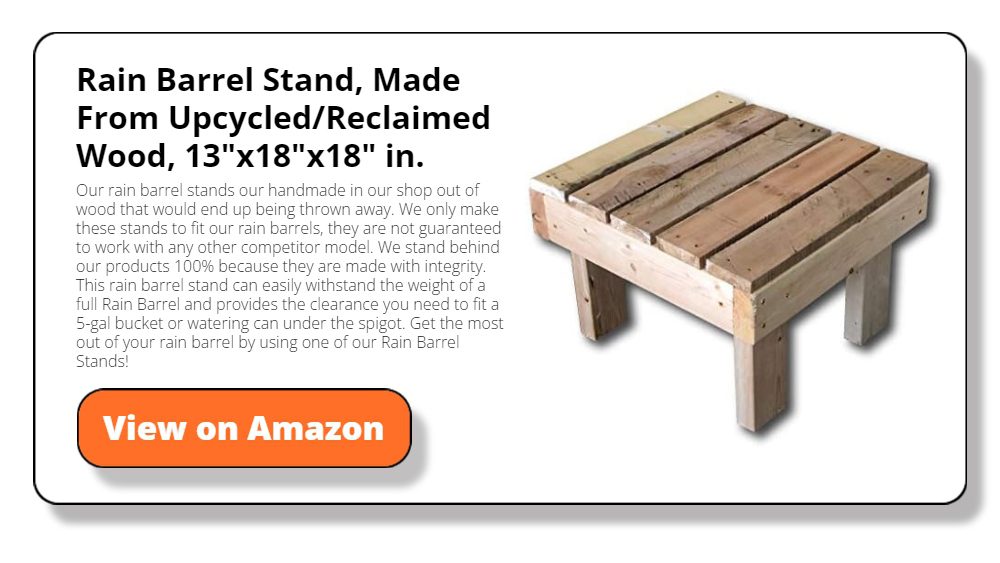Get the week's most popular posts delivered to your inbox.
Our weekly update is free yet priceless and you're less than a minute away from getting the current edition.
In the unlikely event we disappoint, you can unsubscribe with a single click!
Last Updated on October 28, 2025 by teamobn
Rainwater harvesting is not just a trend. It’s a smart way to save water and protect our planet. This method collects rainwater for future use, like watering plants or flushing toilets.
This article explores the benefits of installing a rainwater harvesting system.
Contents
What is Rainwater Harvesting
Rainwater harvesting is a simple idea. It means collecting rainwater that falls on roofs, gutters, or ground. This water is stored in tanks or barrels. Then, it’s filtered and used for different purposes.
Rainwater is caught using a catchment area, usually a roof. It goes through pipes into a storage tank. Filters remove dirt and leaves before the water gets stored. Some systems also have pumps to move the water where it’s needed.
Benefits of Rainwater Harvesting Systems
Rainwater harvesting systems are more than just a smart way to save water. It offers many benefits that can change how you think about water use. Let’s dive into these advantages.
Cost Savings
The first thing many people notice is the dip in their water bills. When you collect rainwater, you are not drawing water from your local water provider. Whether it’s watering the garden or flushing toilets, rainwater is free. Over time, the initial cost of setting up the system pays for itself. Thanks to a rainwater harvesting system, you save money and conserve valuable resources with a water-efficient home.
Environmental Benefits
The planet also gains from rainwater harvesting systems. This method lowers the demand for local water supplies. It reduces the energy and chemicals used to treat and pump water from lakes or rivers. It also helps control stormwater runoff, reducing soil erosion and flooding. Every drop of rainwater you use is a step towards a greener planet.
Water Quality
Rainwater is often cleaner than the water you get from local utilities. It doesn’t have chemicals like chlorine used in water treatment plants. A rainwater harvesting system is great for irrigation because it’s free from salts and other minerals that can harm plant growth. You can filter and purify rainwater for drinking if needed. The result is high-quality water right from your backyard.
Versatility of Use
You’re not limited in how you can use rainwater harvesting systems. It’s ideal for irrigation, washing cars, and cleaning the house. Recycled water can also flush toilets or clean your laundry. With the right treatment, it can even be potable. This flexibility makes meeting your daily water needs easier without straining local resources.
Low Maintenance
Rainwater harvesting systems do need a lot of upkeep. Simply allow the setup to catch and store water when it rains. You only have to clean the filters and check the system occasionally. Some systems use a first flush diverter that removes the initial dirty rainwater. This keeps the stored water clean and reduces the need for frequent maintenance.
Community Benefits
It’s not just individuals who gain from a rainwater harvesting system. Entire communities can benefit. When many people in an area use these systems, it takes the pressure off local water resources. It can make a real difference when water is scarce or expensive. It also fosters a sense of shared responsibility for the environment.
Adds Property Value
Lastly, rainwater harvesting systems can boost your property value. It’s a feature that appeals to environmentally conscious buyers. Plus, it shows that the home is built with sustainable practices in mind. When you invest in a rainwater harvesting system, you also invest in your home’s future worth.
Rainwater harvesting is an all-around win. It saves you money, helps the environment, and provides high-quality water. It’s a practical solution to many challenges we face in managing our water resources today.
The Role of pH Level in Rainwater Harvesting Systems
This is one of the things we often overlook, but monitoring the pH level is quite essential when it comes to managing a rainwater harvesting system. pH is the measure of acidity or alkalinity in water, and values range from 0 to 14. Pure rainwater tends to be slightly acidic, usually falling between 5.0 and 5.5 due to the natural absorption of carbon dioxide from the atmosphere. But, several other factors can influence the pH level during collection and storage, like air pollutants, roofing materials, and algae growth in storage tanks.
Maintaining a balanced pH water level is extremely important for several reasons. Acidic water (with a pH below 6) can corrode pipes, fittings, and tanks, leading to costly repairs and potential contamination of the water. Conversely, alkaline water (with a pH above 8) can interfere with nutrient uptake in plants, reducing the effectiveness of rainwater used for gardening or farming.
Testing the pH of stored rainwater is straightforward. Affordable tools like pH strips or digital meters provide quick and accurate readings. If the pH is too low, you can add baking soda to increase alkalinity a bit. If it’s too high, vinegar or citric acid can bring the level down. If you’re aiming for best results, try to keep the pH between 6.0 and 7.5, especially if the water will be used for irrigation or drinking.
By regularly monitoring and adjusting the pH level, you can ensure that your rainwater harvesting system remains effective, safe, and sustainable.
Types of Rainwater Harvesting Systems
Rainwater harvesting systems come in various forms. Each type has its own set of features and benefits. Knowing the different systems helps you pick the one that fits your needs. Here’s a rundown of some popular methods.
Roof-Based Systems
Roof-based rainwater harvesting systems are a popular choice for good reason. They’re easy to set up and work like a charm for collecting rainwater from your home. Imagine turning your roof into a water-saving hero! All you need are gutters and downspouts connected to a storage tank.
The best part? Most homes already have gutters, so you’re halfway to having your own rainwater harvesting system. It’s like your house was built with water collection in mind. All you have to do is add a few tweaks to make it rainwater-friendly.
But don’t forget about your roof material for your rainwater harvesting system. If you’re saving water to use around the house, you’ll want to ensure your roof isn’t leaching harmful substances into your water stash. So before you dive in, double-check that your roofing is up to snuff.
Ground Catchment Systems
Ground catchment systems are more common in expansive open areas, such as agricultural fields, with plenty of space to collect water. In this kind of rainwater harvesting system, the ground is graded or contoured to direct rainwater to a storage area, like a pond or a reservoir.
The ground may be coated with a water-resistant layer or paved to increase runoff and improve water quality of your rainwater harvesting system. Because ground catchment systems usually serve larger areas, they can collect a significant amount of water but might require more maintenance to keep the catchment area clean.
Rain Barrels
Rain barrels are perhaps the simplest form of rainwater harvesting, ideal for small-scale, residential use. These barrels are typically installed directly under a roof downspout to collect rainwater. They are often equipped with a spigot for easy access and a mesh screen at the top to filter out debris like leaves and twigs.
Holding about 50 to 60 gallons, rain barrels conveniently store gardening or lawn care water. Rain barrels are affordable, easy to maintain, and perfect for beginners interested in a rainwater harvesting system. However, their limited capacity makes them unsuitable for large-scale water needs.
Dry Systems
Dry rainwater harvesting systems differ from the other types in that the pipes used to channel rainwater to the storage tank are designed to empty after each rainfall event. This “dry” setup helps prevent standing water in the pipes, reducing the risk of algae growth and mosquito breeding.
The pipes lead away from the catchment area, usually a roof, to a tank some distance away. Because the pipes empty out, they are less likely to suffer from freezing in colder climates. It makes dry systems an excellent option for regions with seasonal temperature changes.
Wet Systems
Wet rainwater harvesting systems are more complex than their dry counterparts but offer the advantage of handling larger water volumes. In this setup, the pipes remain filled with water constantly and are usually buried underground for protection and insulation.
Multiple downspouts from different areas can feed into the same pipe network, maximizing water collection. Because the pipes are always wet, there’s an increased need for proper sealing to prevent leakage.
It’s also crucial to include filtration mechanisms within your rainwater harvesting system to ensure water quality, especially if the stored water will be used for drinking or cooking.
Green Roofs
Green roofs bring the concept of gardening to new heights. A green roof involves the installation of soil and plants on the rooftop, creating a living, breathing ecosystem. This setup is a form of passive rainwater harvesting system, as the plants absorb and utilize rainwater directly.
By doing so, green roofs help reduce runoff and also provide natural insulation for the building. However, it’s crucial to consider the weight and structural integrity of the building before installing a green roof. Consult professionals to assess if your building can handle the additional load and moisture.
Recharge Pits
Recharge pits serve a unique purpose in the world of rainwater harvesting. Rather than collecting water for immediate use, these pits help recharge underground aquifers. They are shallow, excavated pits filled with porous material like gravel or sand, allowing rainwater to percolate into the ground.
By directing rainwater back into underground water tables, recharge pits help sustain local water ecosystems and can be crucial to long-term water conservation efforts. They are often used in areas prone to drought or where groundwater levels are depleting.
Each of these systems has its advantages and limitations. Understanding these can help you make an informed choice for your rainwater harvesting setup.
Rainwater Harvesting Systems Dos and Donts
Navigating the world of rainwater harvesting can be tricky. Knowing the dos and don’ts can save you time and money. Plus, it ensures you get the most out of your system. Let’s start with the things you should do.
Dos
Conduct a Feasibility Study
Before installing a system, assess your property. Check the roof size, local rainfall patterns, and storage options. It helps you choose the right system for your needs.
Use the Right Materials
Pick materials that are non-toxic and durable. For instance, PVC pipes are often a good choice. Storage tanks should be made from food-grade material if you plan to use the water for consumption.
Install a Filter
Always use a good filter. It removes debris and contaminants from the rainwater. The type of filter you need depends on how you plan to use the water.
Regular Maintenance
Even low-maintenance systems need some upkeep. Check for leaks, clean the filters, and inspect the tank regularly. It ensures your system runs smoothly.
Check Local Regulations
Some areas have rules about rainwater harvesting. Make sure you know these before you start. You might need a permit or have to follow specific guidelines.
Use a First Flush Diverter
This device diverts the first flow of rainwater away from the tank. It’s usually the dirtiest because it washes debris off the roof. A first flush diverter keeps your stored water cleaner.
Don’ts
Don’t Ignore Water Quality
Don’t skip the purification step if you plan to drink the harvested rainwater. Rainwater may contain contaminants from the atmosphere or the catchment surface.
Don’t Neglect Overflow Systems
Always have a plan for excess water. An overflow system or drain will prevent your storage tank from flooding or breaking.
Don’t Skip Regular Cleaning
Even if your system is low-maintenance, don’t neglect cleaning. Dirt and debris can build up and affect water quality.
Don’t Use Corroding Materials
Avoid materials that rust or corrode. These can contaminate your water and shorten the life of your system.
Don’t Harvest Off Unsafe Surfaces
If your roof has toxic substances like asbestos, don’t use it for rainwater harvesting. The water could become contaminated.
Don’t Ignore Seasonal Changes
Rainfall can vary by season. Don’t forget to adjust your water usage and storage plans according to weather forecasts.
Can You Drink Rainwater?
Drinking rainwater is a topic that sparks a lot of interest. The idea of sipping pure, natural water is appealing. But it’s not as simple as it sounds. Raw rainwater can have risks. Here’s what you need to know about the dangers and how to make rainwater safe to drink.
The Risks of Raw Rainwater
Understanding that not all rainwater is safe to drink immediately is crucial. Rain can pick up impurities from the air, like dust and pollutants. If your catchment area is a roof, it might gather bird droppings, leaves, or debris. All of these can make rainwater unsafe to drink.
Bacterial Contamination
Drinking rainwater may sound like a return to nature, but don’t let its clear appearance fool you. Even though it looks clean, that water can host nasty bacteria like E. coli, Salmonella, and Giardia. If you swallow these microscopic troublemakers, you could have a bad stomachache and severe conditions like dysentery.
The risk increases if your storage tank and pipes are on the “clean me maybe” list. Stagnant water is like a five-star hotel for bacteria. And let’s not forget our feathered friends on the roof. Bird droppings can swoop right into your water supply as it flows down.
Chemical Pollutants
Now, let’s talk about chemicals. If you live in the city or near industries, your rainwater might come with unwanted guests. I’m discussing harmful substances like lead, arsenic, or volatile organic compounds. Over time, these can seriously damage your health, including messing with your nervous system or leading to cancer.
But even if you’re out in the countryside, you’re not off the hook. Have you ever thought about what’s in those pesticides and fertilizers used on farms? When it rains, these chemicals can overflow into your rainwater collection system.
Both bacterial and chemical contamination are serious issues but can be managed with the right approach. Taking these risks into account and tackling them with efficient filtration and disinfection can make your rainwater drinkable and safe.
Steps to Make Rainwater Drinkable
If you want to drink your harvested rainwater, there are steps to make it safe.
Filtration
Filtration is the cornerstone of making rainwater drinkable. It’s a multi-step process designed to remove various contaminants. The first line of defense is a fine mesh filter. This filter catches large debris like leaves, twigs, and bugs as water enters the system. One example is the rain harvesting filter that uses a steel mesh to keep out debris and insects.
After this initial stage, the water goes through a sediment filter. This finer filter is designed to trap smaller particles, like sand or silt, that may still be present.
The last and crucial step in the filtration process is activated carbon filtering. Activated carbon filters have a large surface area that attracts and holds a range of chemicals and impurities. This type of filter can remove chlorine, pesticides, and herbicides. It can also improve the water’s taste and odor.
By the end of this comprehensive filtration process, the water is free from most physical and chemical contaminants.
Disinfection
While filtration removes many impurities, it doesn’t make the water safe for drinking. Disinfection is the next critical step. One of the simplest ways to make rainwater drinkable is to boil it. Boiling water for at least one minute kills most bacteria, viruses, and parasites. It’s a foolproof method used for centuries but requires a heat source and can consume energy.
Ultraviolet (UV) disinfection systems are available for a more high-tech approach. These units expose water to UV light, penetrating the microorganisms’ cells and destroying their reproduction ability.
UV treatment is highly effective against bacteria and viruses. However, it does not affect the water’s dangerous chemicals or heavy metals. Also, the water must be clear for UV light to be effective; otherwise, some microbes might be shielded from exposure.
Remember that drinking rainwater is still incredibly risky despite filtering or disinfecting it. Unless you have no choice, only use the recycled water for other purposes such as gardening or laundry.
Conclusion
Rainwater harvesting is a sustainable practice that lowers water bills and carbon footprint. Various methods suit different needs and spaces, from simple rain barrels to more advanced wet systems.
Get the week's most popular posts delivered to your inbox.
Our weekly update is free yet priceless and you're less than a minute away from getting the current edition.
In the unlikely event we disappoint, you can unsubscribe with a single click!






